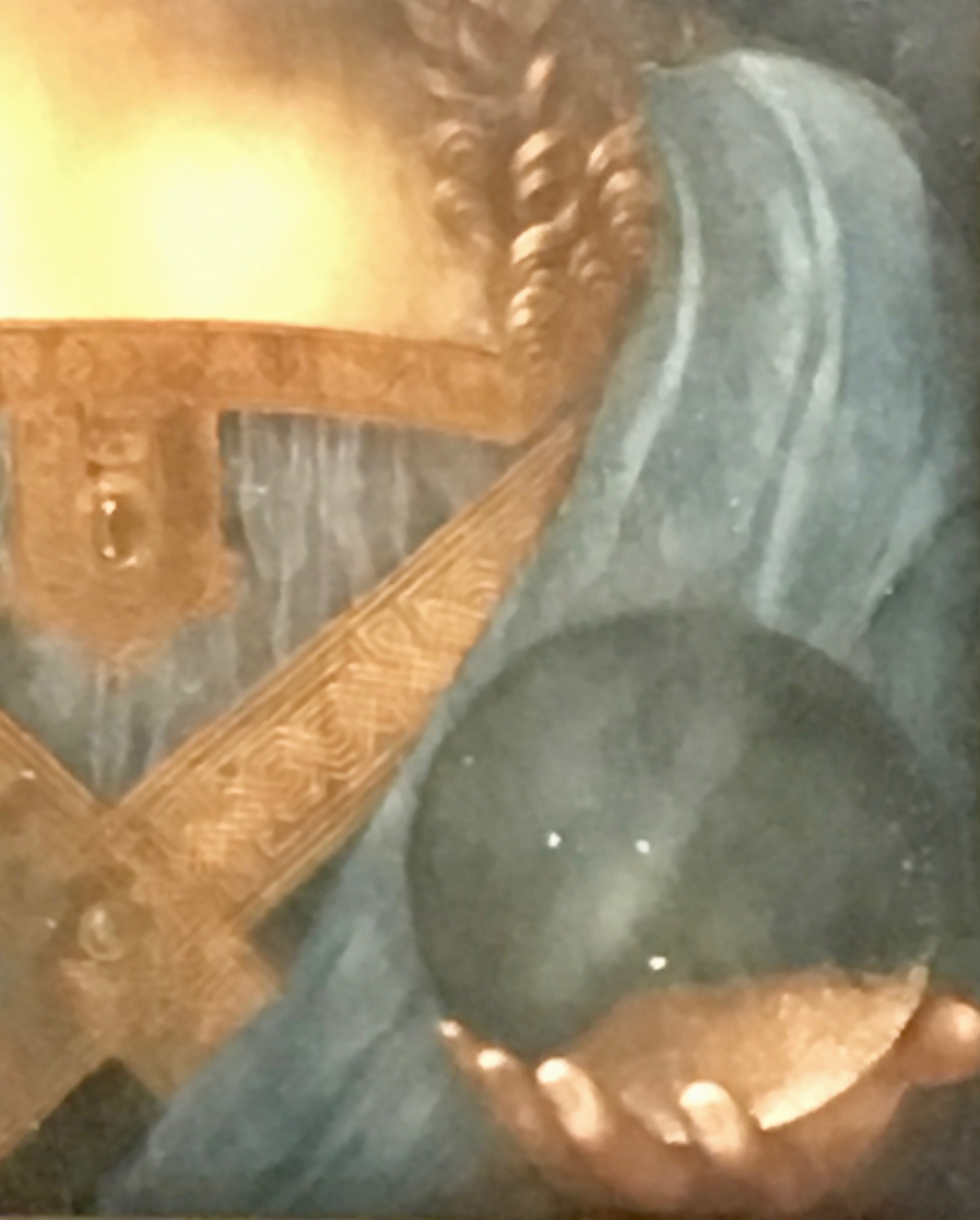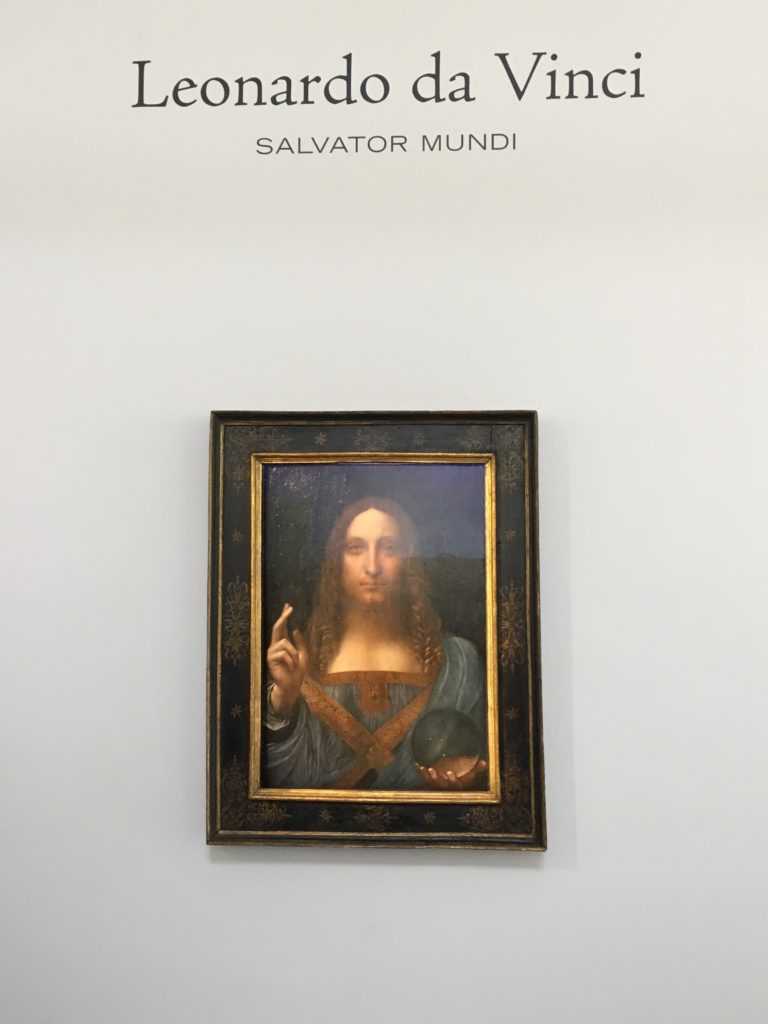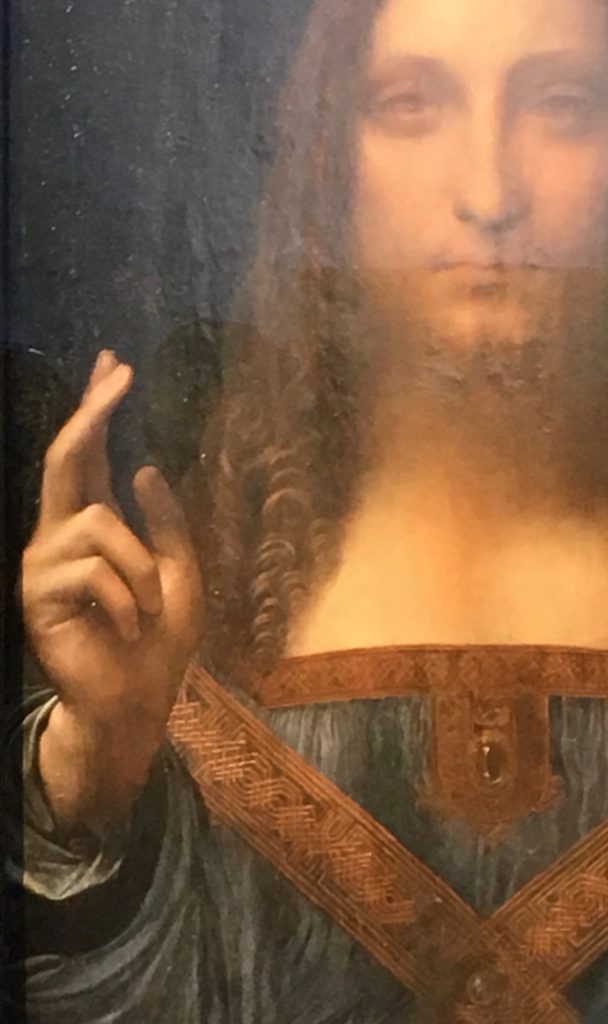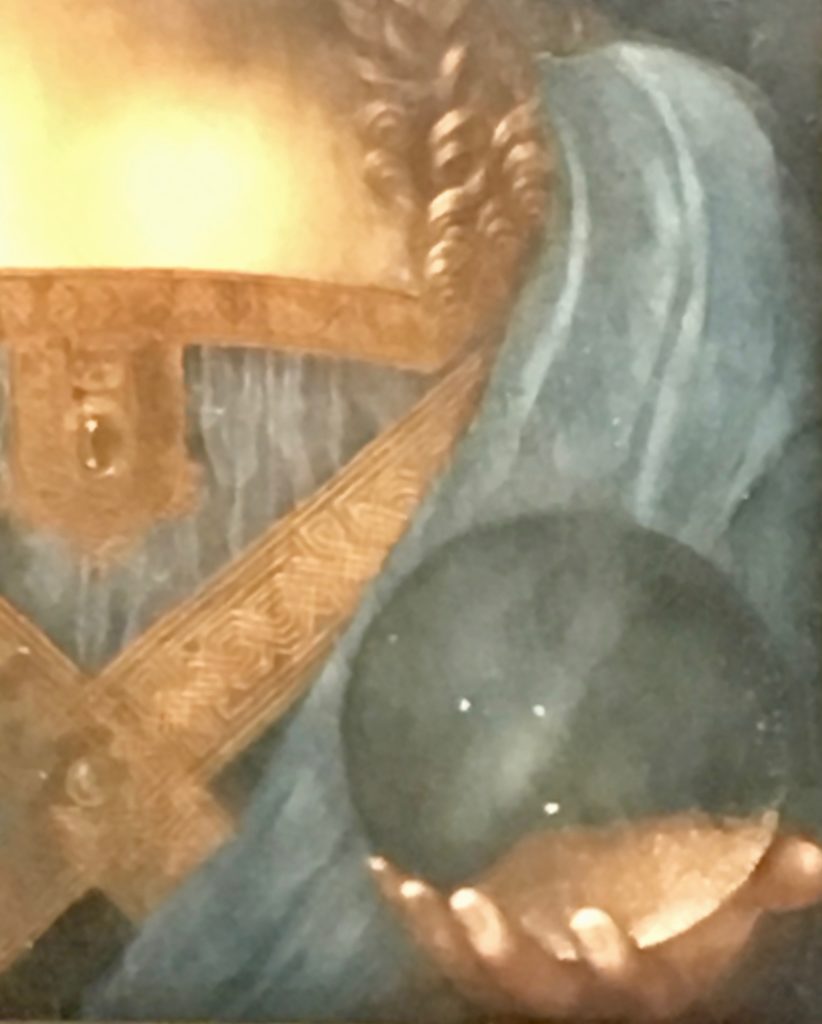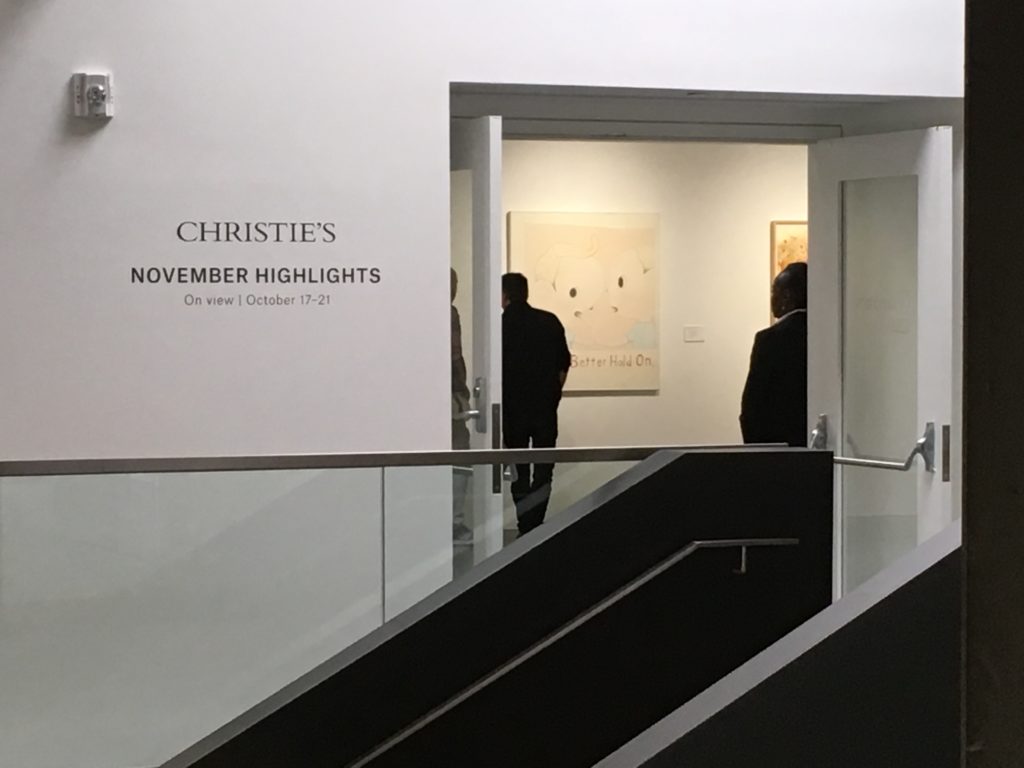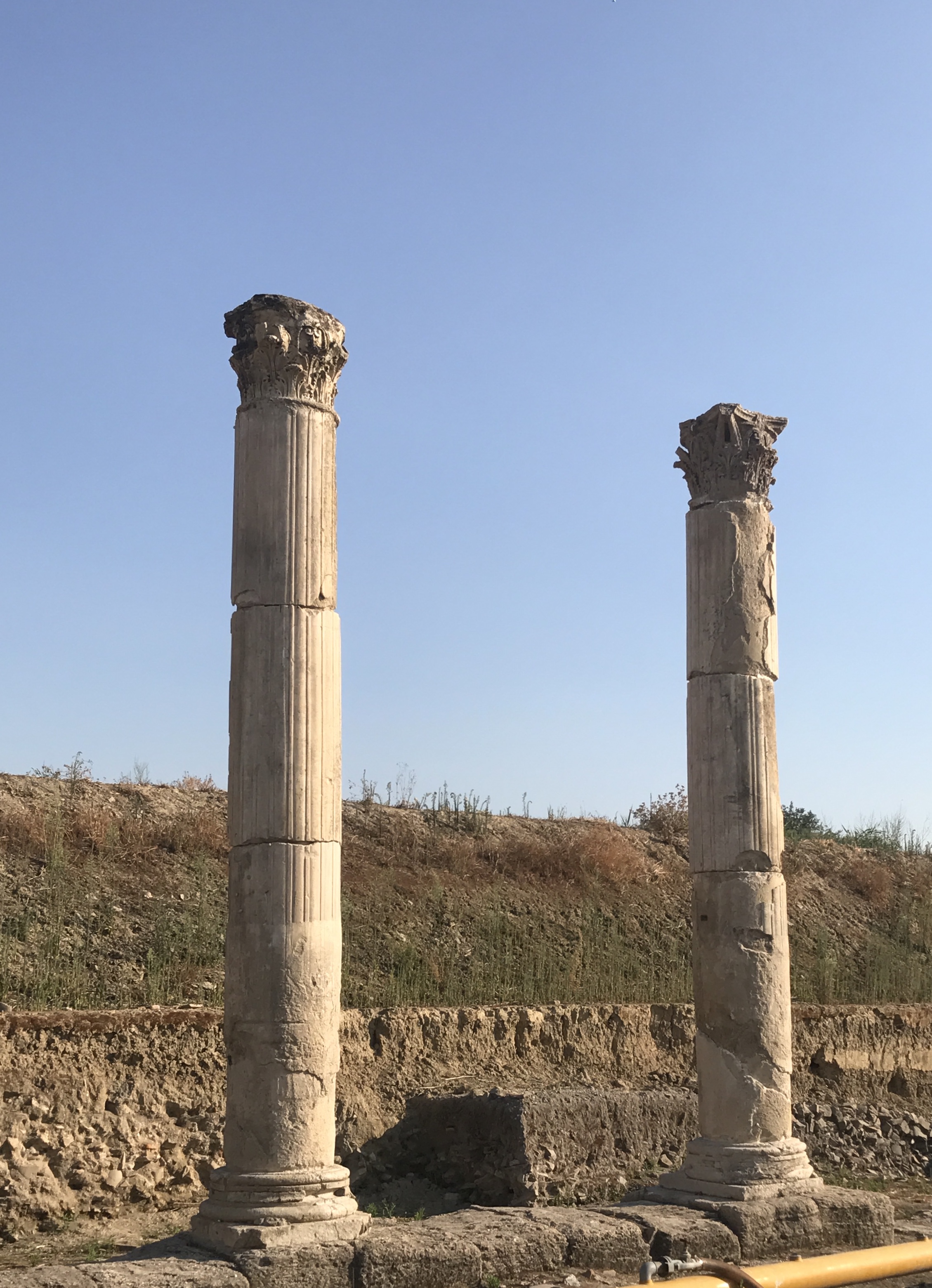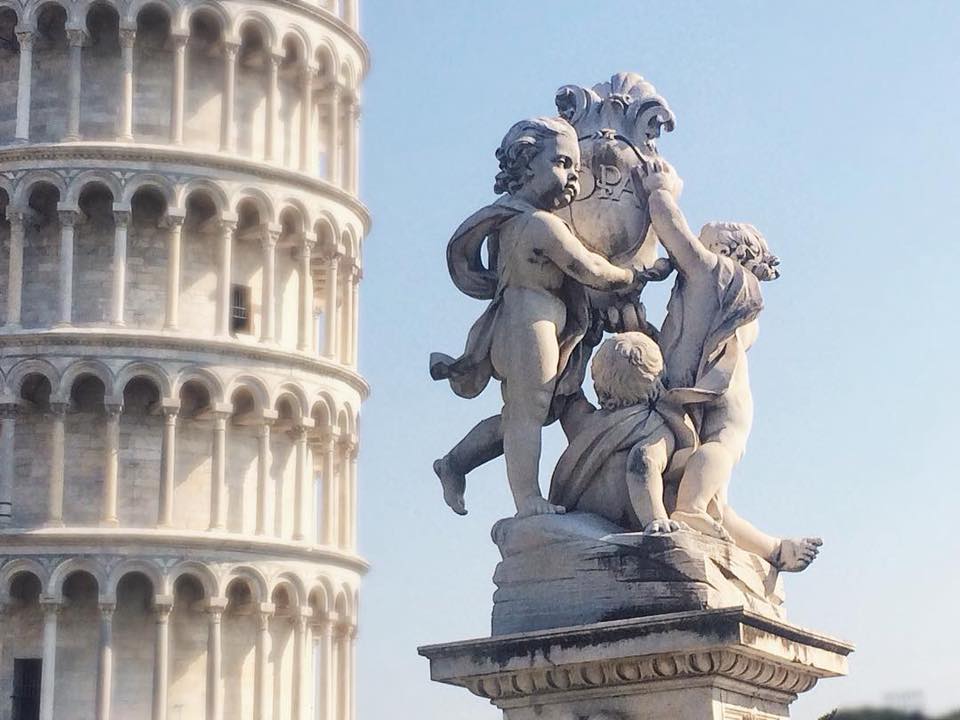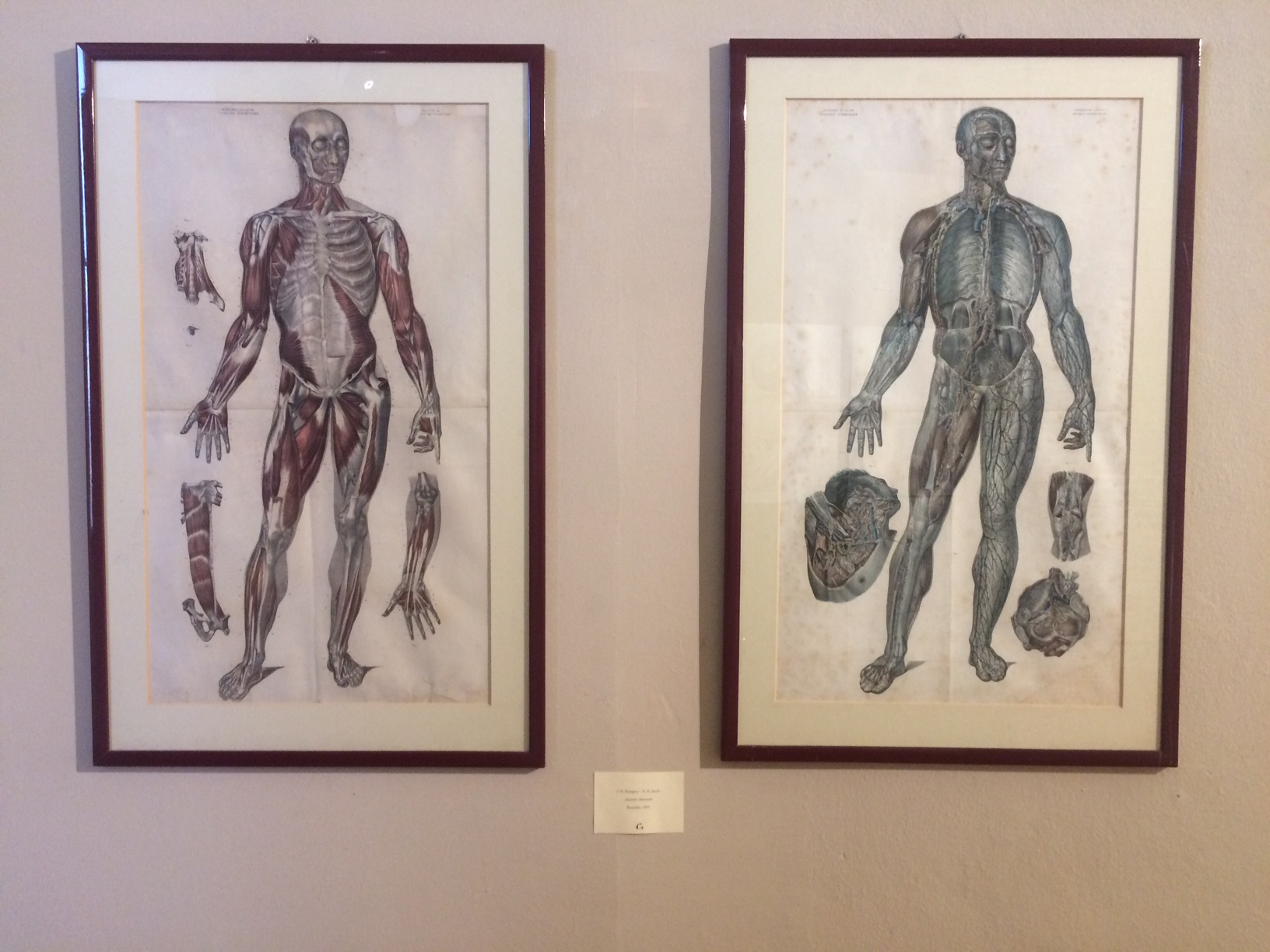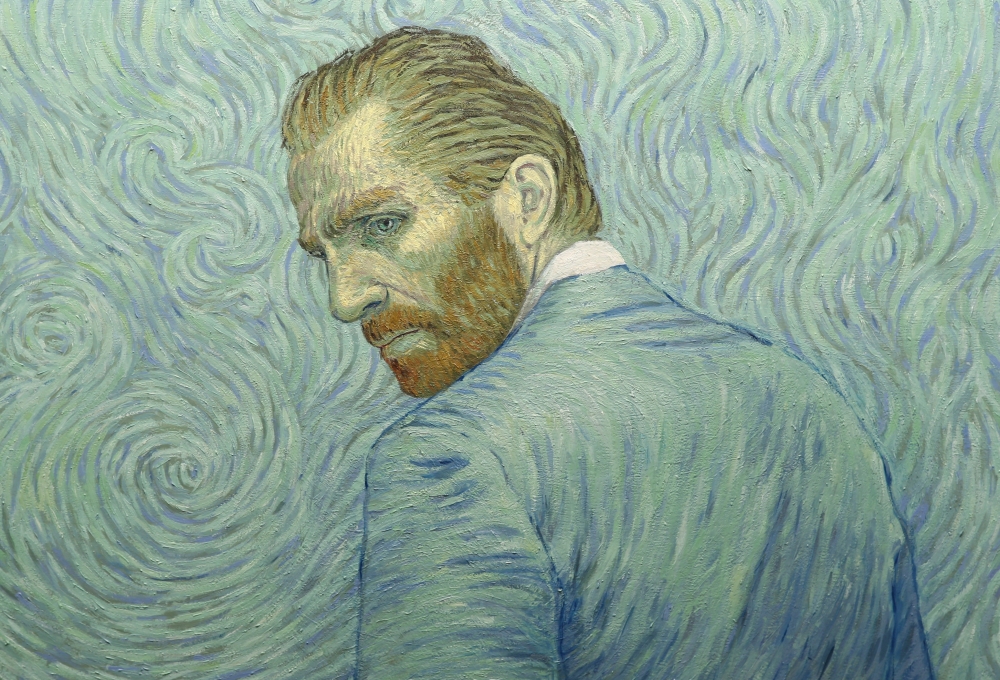“Enigma e fascino – Il Salvator Mundi di Leonardo da Vinci”
a cura di Claire Challancin*
Sono all’incirca venti i dipinti che uno dei più grandi artisti di tutti i tempi, se non il più grande – Leonardo da Vinci, ci ha lasciato a testimonianza del suo genio e talento artistico. Ritenuti pilastri della storia dell’arte e simbolo del Rinascimento, i dipinti dell’artista toscano continuano ancora oggi ad affascinarci. Enigmatiche e ricche di simboli, variamente interpretate nel corso degli anni, le sue opere sono tra le più studiate e reputate al mondo. Non a caso, infatti, la scoperta, o forse sarebbe meglio dire la riscoperta, di uno di questi dipinti ha messo in subbuglio ed attratto l’attenzione di esperti e storici dell’arte in tutto il mondo. L’opera in questione è il “Salvator Mundi”, un dipinto su tavola di 46×66 cm, che a seguito di un “tour” di poche settimane verrà messa all’asta a New York dalla Christie’s, casa d’aste londinese di rilevanza mondiale. Come si può dedurre dal titolo del capolavoro, si tratta del ritratto del Cristo benedicente. Il soggetto è rappresentato con la mano destra sollevata e le dita puntate verso l’alto nell’atto di benedire, mentre nella sinistra regge un globo di vetro con all’interno punti luminosi, rappresentanti rispettivamente la sfera e gli astri celesti (Foto 2, 3). Sottoposto ad attenti ed accurati esami scientifici e al parere di critici e professori di fama mondiale, nel 2011 il Salvator Mundi è stato dichiarato un originale da quattro tra i maggiori esperti di pittura leonardesca al mondo e nel 2012 incluso nell’esposizione “Leonardo da Vinci – Painter at the Court of Milan” della National Gallery. Posta di fronte ad un Pollock ed a lato di un Kandinsky e un Magritte, producendo un particolare, ma affascinante contrasto tra arte moderna e contemporanea e arte rinascimentale, l’opera è momentaneamente esposta al Minnesota Street Project di San Francisco (Foto 3, 4).
L’odissea del Salvator Mundi.
Affascinante e quasi incredibile è la storia di questo dipinto. Commissionato dal re di Francia Luigi XII, viene realizzato da Leonardo tra il 1506 e il 1513. Passa poi nella mani dei re d’Inghilterra Carlo I e successivamente Carlo II, per poi finire nelle collezioni di un numero indefinito di nobili britannici collezionisti di opere d’arte. Nel 1763, dopo l’ennesima vendita, se ne perdono le tracce. Qualche decennio dopo, un noto collezionista di opere d’arte, Sir Francis Cook, lo acquista. Ciò che, tuttavia, il nobile inglese non sa è che l’opera in questione è un dipinto di Leonardo. Infatti, nel corso degli anni il Salvator Mundi perde l’attribuzione leonardesca e viene spesso associato alla scuola milanese e, di tanto in tanto, ad alunni di Leonardo. Dopo essersene perse le tracce per più di 100 anni, il capolavoro del maestro fiorentino viene venduto nel 1958 per 45 sterline da un venditore totalmente all’oscuro del valore effettivo dell’opera in questione. Nel 2005, un consorzio di commercianti ed investitori d’arte della Louisiana acquista il dipinto per 10.000 dollari e ne finanzia il restauro e lo studio. Il 2011 è l’anno della svolta. Infatti, quattro tra i più influenti critici d’arte ne decretano l’autenticità. Il dipinto viene dunque venduto per il valore di 127.5 milioni di dollari al magnate russo Dmitry Ryboloviev. Attualmente la casa d’aste Christie’s è in possesso del dipinto. L’opera, esposta prima ad Hong Kong, è attualmente a San Francisco e tra pochi giorni sarà esposta a Londra e successivamente a New York, dove verrà messa all’asta venerdì 15 Novembre, a partire da una base di 100 milioni di dollari. Al pubblico verrà sfortunatamente preclusa l’opportunità di vedere dal vivo il dipinto nel caso venisse acquistato da un collezionista privato.
Prove dell’autenticità.
Come già accennato, nel corso degli anni, probabilmente a causa dei continui spostamenti e delle continue modifiche, il Salvator Mundi perde l’attribuzione leonardesca. Infatti, nel tempo, vengono sovrapposti al dipinto strati di pittura e vernice. Alla figura del Cristo sono aggiunti baffi e barba, mascherando le tipiche linee del pittore toscano. L’opera perde quindi valore e fama, e viene considerata una semplice copia. Tuttavia, dopo un primo restauro e la rimozione degli strati più superficiali di pittura e vernice, l’opera attrae nuovamente l’attenzione degli esperti di storia dell’arte, che individuano e riconoscono i tratti e le pennellate caratteristiche della pittura vinciana. Analisi più accurate svolte dalla restauratrice Dianne Modestini, rivelano inoltre un pentimento. I pentimenti vengono spesso infatti considerati prove dell’originalità delle opere. Un’ennesima riprova sembra poi venire dai pigmenti che, analizzati e confrontati con quelli della Vergini delle Rocce, confermano Leonardo come autore del capolavoro. Infine, nel 2011 Carmen C. Bambach, Pietro Marani, Maria Teresa Fiorio e Martin Kemp, critici e storici dell’arte di fama mondiale, vengono invitati dalla National Gallery per decretarne, o smentirne, l’autenticità. I quattro esperti inseriscono all’unanimità il Salvator Mundi nell’elenco dei dipinti leonardeschi, facendolo entrare ufficialmente nell’olimpo delle opere rinascimentali. Kemp ha infatti dichiarato che nonostante il suo scetticismo e la sua costante ricerca di difetti che contraddicano l’originalità del Salvator Mundi, non è riuscito a smentirne l’autenticità. Marani dal canto suo sottolinea come “la qualità della pittura, i colori meravigliosi, i rossi e gli azzurri del panneggio […] ricordano proprio quelli dell’Ultima Cena” (Corriere.it). Tuttavia, critiche a questa interpretazione non mancano. In particolare, quelle mosse da Walter Isaacson e Frank Zöllner. Isaacson ritiene un’anomalia per Leonardo il fatto che la sfera sorretta dal Cristo non rispetti le leggi dell’ottica, argomento studiato in modo approfondito dall’artista fiorentino. Zöllner dal canto suo ritiene che l’opera sia molto probabilmente stata prodotta da un alunno di Leonardo o da un suo seguace, ma non dal maestro stesso. Un altro esperto, opposto al parere della maggior parte dei critici, è Michael Daley. Quest’ultimo ritiene la postura del Cristo non in linea con le innovazioni tipiche di Leonardo, vale a dire la torsione del busto e del volto. Inoltre suggerisce che, prendendo come riferimento una copia dell’opera originale prodotta da Wenceslaus Hollar nel XVII secolo, la mano riflessa nella sfera nell’originale seguirebbe le leggi di deviazione. Nonostante le critiche, che non mancano mai per qualsiasi opera di levatura e rilevanza mondiale, la maggioranza degli esperti di storia dell’arte ritiene sicuro attribuire il Salvator Mundi a Leonardo da Vinci.
Nonostante le analisi e i continui test, la verità assoluta molto probabilmente non sarà mai raggiunta. E’ indubbio che un alone di mistero continuerà ad avvolgere quest’opera, che rimarrà perciò, come molte altre opere leonardesche, un affascinante enigma. Ma è proprio anche grazie a questo che le opere dell’artista fiorentino godono oggi di fama mondiale e che Leonardo è considerato uno dei più grandi, se non il più grande, artista di tutti i tempi.
Glossario:
Pentimento: Il pentimento è una modifica del lavoro originale effettuata dall’artista durante la produzione dell’opera. Queste modifiche sono solitamente nascoste sotto ad uno strato successivo di pittura. In alcuni casi, diventano visibili perché lo strato più superficiale diventa trasparente nel tempo. I pentimenti possono inoltre essere individuati tramite l’utilizzo di riflettografia infrarossa (analisi che sfrutta i raggi infrarossi per leggere strati meno superficiali di un dipinto ndr.) e raggi X. Sono interessanti perché mostrano come l’artista ha modificato nel tempo la sua opera ed, alcune volte, servono ad individuare l’autore dell’opera stessa. (Traduzione da The National Gallery Glossary)
Salvator Mundi: Salvator Mundi, dal latino Salvatore del Mondo, è il nome usato per descrivere le raffigurazioni di Cristo, usato in particolar modo in Europa verso la fine del XV e l’inizio del XVI secolo. In tali rappresentazioni Cristo è solitamente ritratto ad una distanza ravvicinata (mezzobusto), spesso nell’atto di benedire. Queste raffigurazioni del soggetto venivano prodotte come oggetti di devozione personale. (Traduzione da The National Gallery Glossary)
Sitografia:
Alberge, Dalya. “Mystery over Christ’s Orb in $100m Leonardo Da Vinci Painting.” The Guardian, Guardian News and Media, 18 Oct. 2017, www.theguardian.com/artanddesign/201 7/oct/19/
“All’asta Il ‘Salvator Mundi’, L’ultimo Leonardo in Mani Private.” National Geographic, National Geographic, 11 Oct. 2017, www.nationalgeographic.it/popoli-culture/2017/10/11/ news/
BBC Production: “Da Vinci: The Lost Treasure.” Films Media Group, 2011, fod.infobase.com/PortalPlaylists
Desmarais, Charles. “Rare Leonardo Painting to Stop in San Francisco before $100 Million Auction.” SFGate, SFGate, 11 Oct. 2017, www.sfgate.com/news/article/
Matthews, Damion. “Leonardo Da Vinci’s ‘Salvator Mundi’ Comes to San Francisco.” SFLUXE, SFLUXE, 17 Oct. 2017, sfluxe.net/leonardo-da-vinci-salvator-mundi/
Panza, Pierluigi. “Il Leonardo Ritrovato in America.” Il Leonardo Ritrovato in America, Corriere.it, 5 July 2011, www.corriere.it/cultura/11_luglio_01/
The National Gallery, www.nationalgallery.org.uk/paintings/glossary.
___________
*Claire Challancin ha collaborato come ArcheoInfluencer al progetto di OsservArcheologiA, dal 2/10/2017 al 25/09/2019
RIPRODUZIONE RISERVATA ©OsservArcheologiA
È consentito l'utilizzo dei contenuti previa indicazione della fonte

